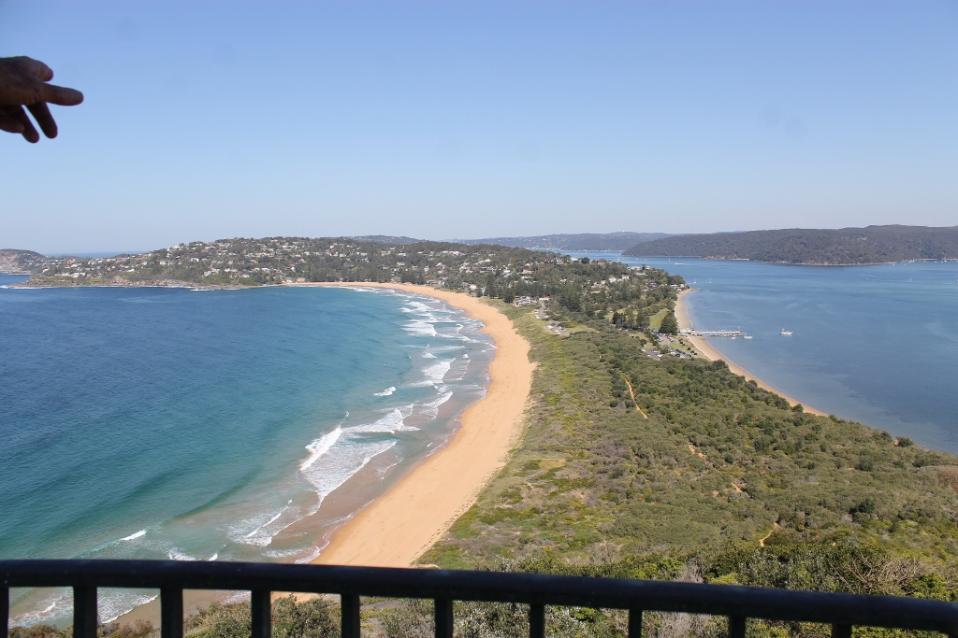Marine Parks Phase 3 Consultation Commences: Local Changes Details
Protecting The Future Of Our Marine Estate
August 16, 2018: NSW Government
The NSW Government is seeking community views on a new marine park proposal, which includes 25 sites between Newcastle and Wollongong.
Premier Gladys Berejiklian said sites have been carefully analysed by the NSW Marine Estate Management Authority and the community will still have another chance to have its say.
“NSW’s beautiful marine environment is iconic and the envy of the world. We want to keep it that way so that future generations can continue to enjoy it,” Ms Berejiklian said.
“The NSW Government is committed to preserving and protecting our natural environment.”
Under the proposal, the marine park will have three types of zones:
- Sanctuary Zones would enhance biodiversity and allow a range of activities such as snorkeling, diving and boating;
- Conservation Zones would provide a high level of environmental benefit and allow abalone and lobster fishing;
- and
Special Purpose Zones would seek to address a specific threat or allow a certain activity such as recreational fishing on an artificial reef.
The NSW Government has also today unveiled $45.7 million for the first stage of a 10-year Marine Estate Management Strategy.
The investment will help to address some of the biggest threats to our marine environment, including pollution and litter.
Minister for Primary Industries Niall Blair said our coastal environments are famous for good fishing, diving, swimming and whale watching but we can’t afford to take them for granted.
“This strategy is the first of its kind; it will streamline how we manage our 1,750 km of coastline, 826 beaches and 185 estuaries in NSW,” Mr Blair said.
“Stage one of the strategy will focus on addressing the most severe threats to the health of the marine estate from pollution and marine litter.”
Environment Minister Gabrielle Upton added, “The Marine Estate Strategy is a massive win for the environment and for those who enjoy getting onto the water. As in all things, the important thing is to get the balance right.”
Member for Coogee Bruce Notley-Smith said, “We want to make sure Coogee and all our coastal environments are well looked after and I encourage my electorate to have their say on the marine park proposal.”
Anyone can have their say during the six-week consultation period on the proposed marine park at:
Submissions close 11:45 pm on 27 September 2018
Community information sessions
A series of community information sessions will be held throughout the Hawkesbury Shelf marine bioregion during the consultation period. Staff will be on hand to provide more information and answer questions on the marine park. There will also be opportunity to make a submission at these sessions using the online survey.
The events schedule can be found here. As the majority of events will be held outdoors, alternate venues may be required so please do check the schedule prior to each session.
Phase 3 - Information sessions
Events schedule
Date Time Location Proposed Marine Park Site
Friday 31 August 2018 07:00 – 09:30 TBC North Harbour & Cabbage Tree Bay
Saturday 1 September 2018 8:00 – 12:00 TBC Cabbage Tree Bay
Sunday 2 September 2018 8:00 - 11:00 TBC North Harbour & Cabbage Tree Bay
Saturday 22 September 2018 8:00 - 12:30 TBC Narrabeen Head
Sunday 23 September 2018 7:00 - 11:00 TBC Long Reef
Sunday 23 September 2018 12:30-15:00 TBC Barrenjoey Head
Discussion paper and supporting information
The discussion paper is in two parts:
Part 1 – outlines the context and approach for enhancing marine biodiversity in the bioregion (PDF, 5MB)
Part 2 – is the marine park proposal which describes the proposed management at 25 distinct sites in the bioregion (PDF, 12MB)
Additional information :
FAQ – A marine park proposal for Hawkesbury Shelf marine bioregion (Phase 3) (PDF, 1 MB)
Overview map of proposed marine park (PDF, 834 KB)
Aboriginal factsheet (PDF, 194 KB)
Hawkesbury Shelf Marine Bioregion Assessment Phase 3
Phase 3 of the Assessment involves the release of a discussion paper (Part 1 (PDF, 5MB) and Part 2 (PDF, 12MB)) outlining the Authority’s approach to enhancing the conservation of marine biodiversity in the bioregion while allowing for a range of benefits and uses the NSW community derives from the marine estate in this region via:
- initiatives and actions in the Marine Estate Management Strategy 2018–2028 (PDF 11 MB)(Strategy), and
- a new marine park proposal for the bioregion.
The Strategy focuses on addressing priority and cumulative threats that operate throughout the NSW marine estate, as identified and assessed in the statewide Threat and Risk Assessment (TARA).
Background information about phases 1 and 2 of the assessment is available here.
The aim of the proposed new marine park is to reduce risks at a local scale from some site-based threats, while helping to conserve marine biodiversity. It is designed to complement the initiatives and management actions of the Strategy, while allowing for a wide range of recreational and commercial activities to still occur.
It includes a network of 25 distinct sites (834 KB), rather than a single large marine park. Three zone types - sanctuary zones, conservation zones and special purpose zones are proposed across the 25 sites.
Local Sites: From Part 2
LION ISLAND
Lion Island is located in Broken Bay. A special purpose zone is proposed covering a 45 hectare area within 200 metres of the Island (Figure 9).
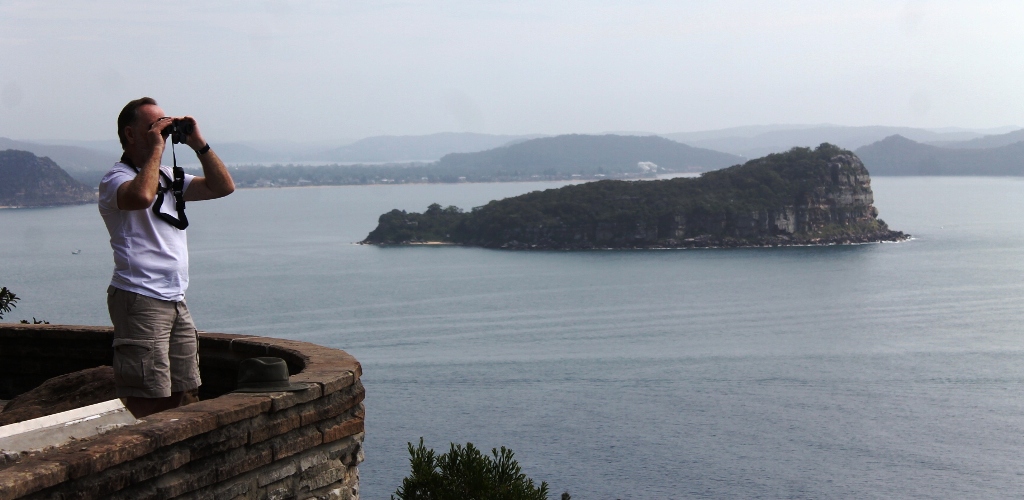
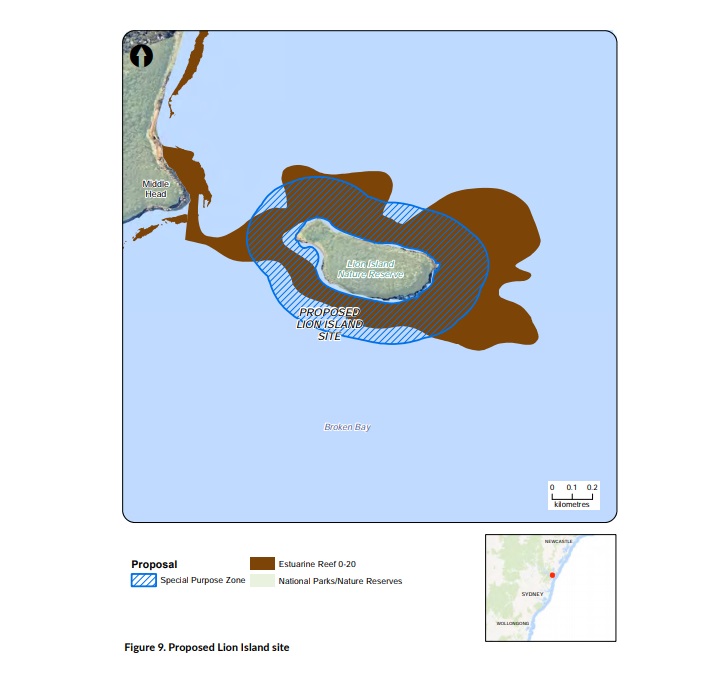
CURRENT MANAGEMENT
Lion Island was dedicated as a fauna reserve in 1956 and reclassified as a nature reserve under the National Parks and Wildlife Act 1974. No specific spatial management arrangements are in place other than existing regulations that generally apply to activities in the marine estate, such as NSW fishing rules and restrictions.
SITE OBJECTIVES
The primary objective for the proposed Lion Island site is to:
• reduce risks to identified threatened and protected species of the bioregion.
The secondary objectives that apply to this site are listed in Table 5.
ENVIRONMENTAL, SOCIAL, CULTURAL AND ECONOMIC VALUES
The waters surrounding Lion Island are important for the little penguin (Eudyptula minor), which is listed as a threatened species under the Biodiversity Conservation Act 2016.
The area has significance to the local Aboriginal communities. Spiritual sites and evidence of past cultural use, including shell middens, have been recorded.
PRIORITY THREATS TARGETED TO ENHANCE BENEFITS AT THIS SITE
The threats that will be addressed at this site and expected benefits to be enhanced are listed in Table 19.
PROPOSED MANAGEMENT RULES
Vessel speed restrictions (8 knots) are proposed in all waters within 200 metres of Lion Island to reduce the chance of vessel strike to little penguins. Hand gathering and collecting marine vegetation would be prohibited (Table 20).
FEEDBACK FROM COMMUNITY ENGAGEMENT
Lion Island was identified as having conservation value during community engagement. The National Parks Association of NSW (Southern Sydney Branch) described this site as having high biodiversity value.
BARRENJOEY HEAD
Barrenjoey Head is located at the northern end of the Palm Beach isthmus. The iconic Headland is part of a national park, has an historic lighthouse and is the southern head of Broken Bay, at the entrance to Pittwater.
The proposed special purpose zone would extend the current Barrenjoey Head Aquatic Reserve (Figure 10) to cover a total area of 133 hectares and include the adjacent seagrass, including the endangered population of Posidonia australis (Figure 11).
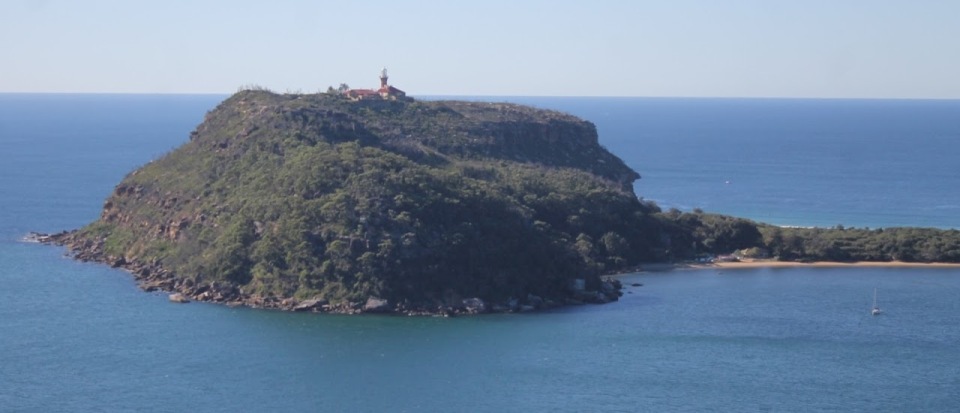
CURRENT MANAGEMENT
The existing Barrenjoey Head Aquatic Reserve was established in March 2002. The reserve covers 28 hectares, extending around the headland and including the area between the mean high water mark and out to 100 metres offshore from the mean low water mark.
Collecting cunjevoi, invertebrates and marine vegetation is prohibited, with the exception of rock lobsters, abalone, sea lettuce and bait weed. Recreational fishing competitions and collecting for scientific and educational purposes require a permit.
A fishing closure under the Fisheries Management Act 1994 prohibits netting by recreational and commercial fishers from Barrenjoey Head to Stokes Point; the aim is to limit the potential spread of marine algae, Caulerpa taxifolia.
SITE OBJECTIVES
The primary objectives for the proposed Barrenjoey
Head site are to:
• reduce risks to identified threatened and protected species of the bioregion
• reduce risks to identified habitats of the bioregion
• continue to provide for marine economic opportunities that are consistent with ecologically sustainable development, for example low-risk commercial fishing activities
• establish and maintain public infrastructure to support access and use of the bioregion, for example moorings, boat ramps.
The secondary objectives that apply to this site are listed in Table 5.
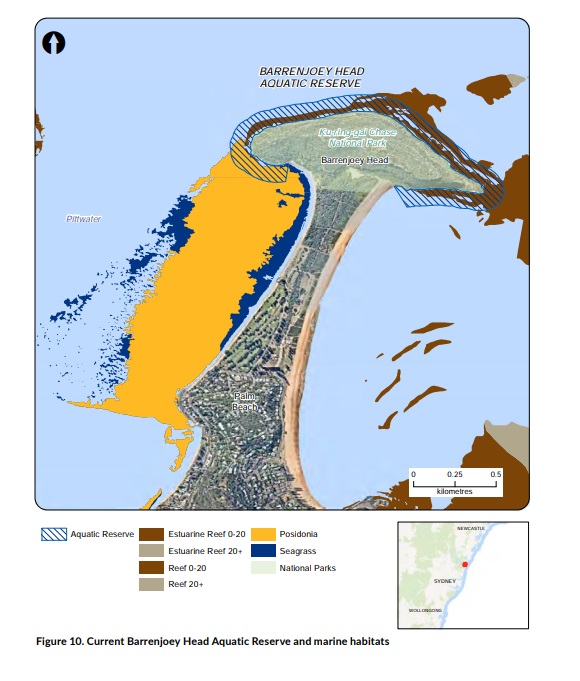
ENVIRONMENTAL, SOCIAL, CULTURAL AND ECONOMIC VALUES
The existing aquatic reserve contains a variety of habitats. The combination of estuarine and oceanic influences supports the wide variety of marine life found here. The northern facing shoreline contains a relatively steep intertidal area dominated by large boulders, and a narrow strip of subtidal reef dominated by turf algae and some kelp. There are extensive seagrass beds located adjacent to the western side of the isthmus, including a large area of an endangered population of seagrass, Posidonia australis, which is listed under the Fisheries Management Act 1994. Significant damage to seagrass from anchoring, propellers, and swing moorings is evident from aerial imagery (Figure 11).
Barrenjoey Headland and its surrounding waters are frequented by many user groups. Passive recreation (walking, swimming, kayaking, paddle boarding) is popular here. Boats frequently shelter in the Pittwater side of the headland. Surfing is popular on the ocean side at the northern end of Palm Beach. Barrenjoey Headland is also used by recreational line fishers and spearfishers.
The area has significance to the local Aboriginal communities. Spiritual sites and evidence of past cultural use, such as shell middens, have been recorded in the Aboriginal Heritage Information Management System.
Some Ocean Trap and Line commercial fishing takes place in the area.
PRIORITY THREATS TARGETED TO ENHANCE BENEFITS AT THIS SITE
The threats that will be addressed at this site and expected benefits to be enhanced are listed in Table 21.
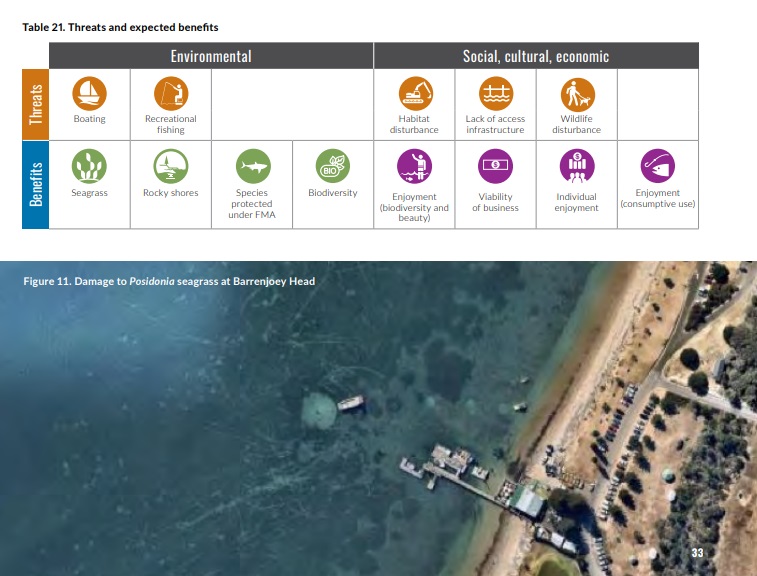
PROPOSED MANAGEMENT RULES
Fishing rules that apply to the existing aquatic reserve would be adopted in the proposed special purpose zone (Table 22).
Boating and moorings at the site would be reviewed and restrictions developed with boating stakeholders to reduce damage to seagrass from propellers and moorings. Anchoring in seagrass would not be permitted.
Aboriginal cultural use and recreational activities, such as swimming, snorkelling and scuba diving, would continue to be permitted.
FEEDBACK FROM COMMUNITY ENGAGEMENT
The conservation value of Barrenjoey Head was identified by community members and peak conservation stakeholders – the National Parks Association of NSW and Nature Conservation Council of NSW. Concerns regarding the establishment of a no take area at this site were raised by recreational fishers and spearfishers as it is reported to be a safe area to spearfish and fish from small vessels.
NARRABEEN HEAD
The site is located at North Narrabeen Headland on Sydney’s northern beaches. It is proposed to establish a special purpose zone to replace the existing aquatic reserve. No changes to management rules are proposed.
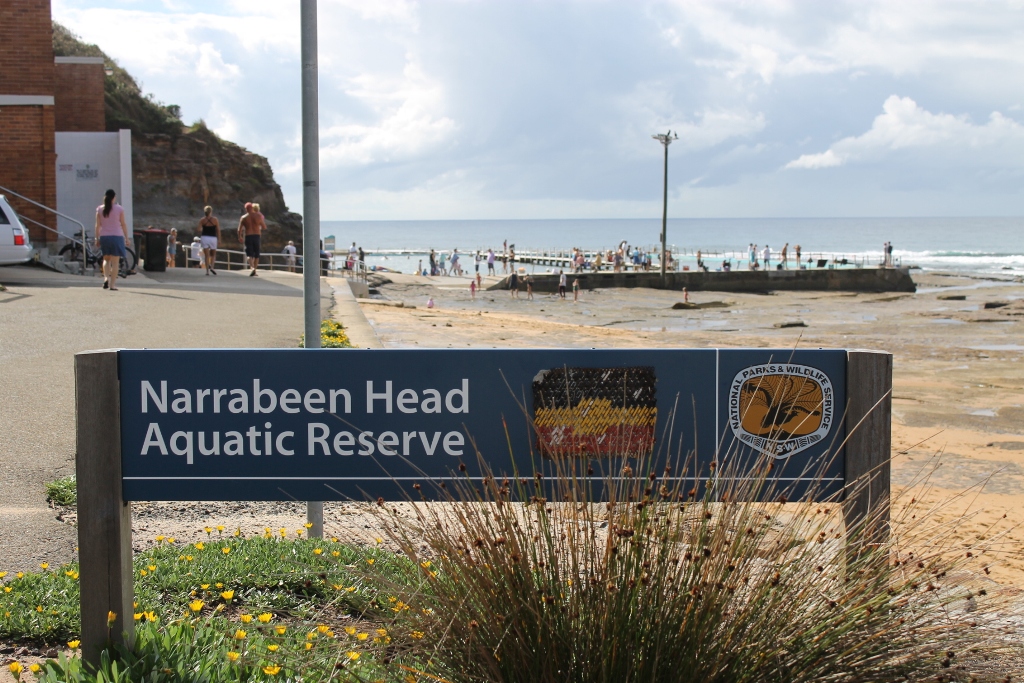
CURRENT MANAGEMENT
Narrabeen Head Aquatic Reserve was established in March 2002. It covers seven hectares and extends from the southern end of Turimetta Beach, to the western extremity of the rock baths at Narrabeen Head, covering the area from the mean high water mark to a distance of 100 metres offshore of the mean low water mark.
Collection of cunjevoi, marine invertebrates and seaweed is prohibited in the reserve, with the exception of lobster, abalone, sea lettuce and bait weed. Recreational fishing competitions and collecting for scientific and educational purposes require a permit.
SITE OBJECTIVES
The primary objectives for the proposed Narrabeen Head site are to:
• enhance opportunities for scientific research, education and learning including Aboriginal culture
• promote stewardship of the marine estate.
The secondary objectives that apply to this site are listed in Table 5.
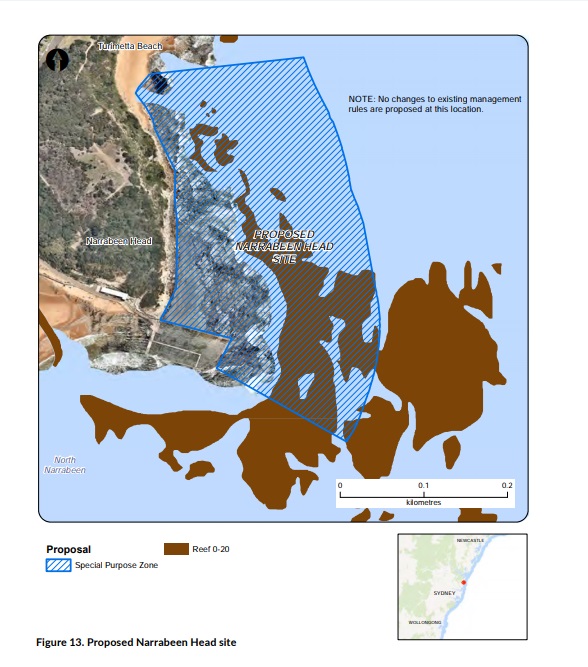
ENVIRONMENTAL, SOCIAL, CULTURAL AND ECONOMIC VALUES
The site primarily consists of rocky shore, shallow rocky reef, beach and shallow soft sediments. It contains a diverse array of marine algae, invertebrates and fishes.
Birds such as oystercatchers, cormorants, sea gulls and sea eagles also forage in the area.
Narrabeen Head Aquatic Reserve was declared primarily to facilitate educational activities on the rocky shore. As such, it is highly valued for education and regularly used as a marine field study site by school groups. The Coastal Environment Centre at Narrabeen, run by Council, conducts environmental education activities in the local area as do private education companies Ecotreasures
and AUSECO.
The reserve is currently used for a wide variety of recreational activities, including snorkelling, scuba diving, swimming, sunbathing, picnics, recreational boating, line and spear fishing, walking and dog walking.
The site is located adjacent to the North Narrabeen National Surfing Reserve.
PRIORITY THREATS TARGETED TO ENHANCE BENEFITS AT THIS SITE
The threats that will be addressed at this site and expected benefits to be enhanced are listed in Table 23.
PROPOSED MANAGEMENT RULES
The proposed seven hectare special purpose zone (Figure 13) would maintain the existing boundaries and current fishing rules, with continued access to the reserve as an educational area and for Aboriginal cultural use. The assessment found that there were limited opportunities for further threat reduction at the site as it has limited subtidal environmental assets. There is also little opportunity for further enhancing social and cultural benefits.
FEEDBACK FROM COMMUNITY ENGAGEMENT
The high environmental value of Narrabeen Head was identified by peak conservation stakeholders – the National Parks Association of NSW and the Nature Conservation Council of NSW.
LONG REEF
Long Reef is a prominent beach, headland and rock platform on Sydney’s northern beaches, between Collaroy and Dee Why.
The proposed special purpose zone would expand the existing Long Reef Aquatic Reserve to include the adjacent subtidal reef. It is proposed to establish this zone as a site managed for sustainable recreational fishing.
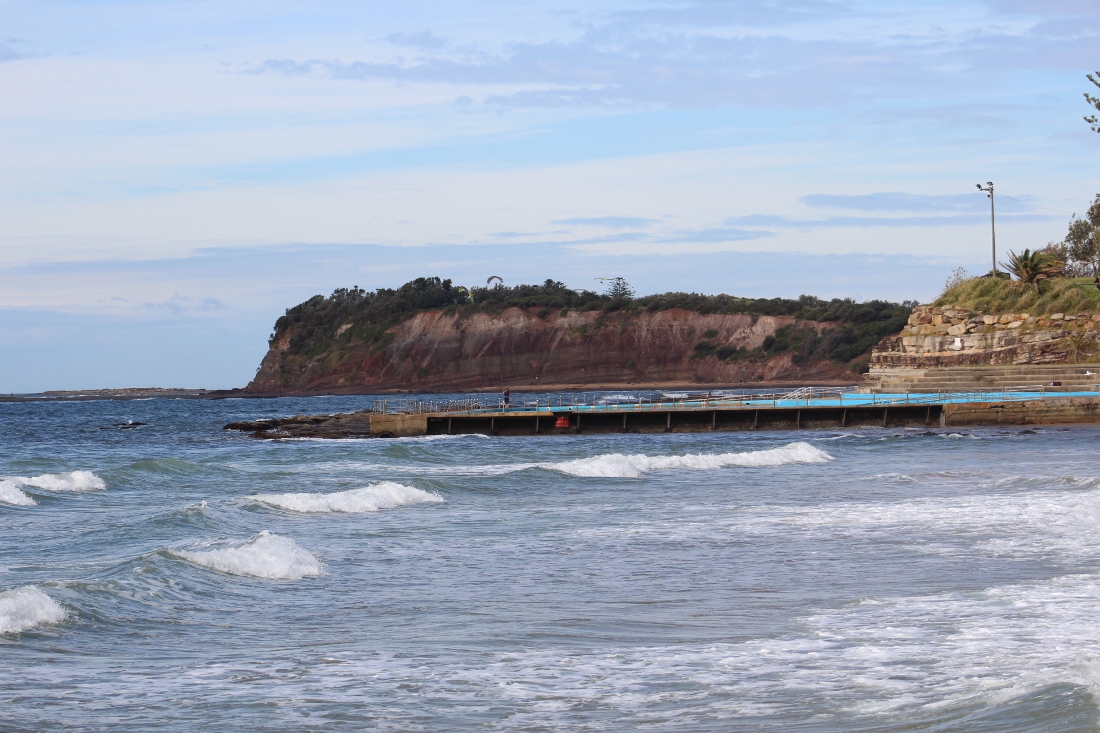
CURRENT MANAGEMENT
The existing Long Reef Aquatic Reserve (Figure 14) was established in 1980 and is the oldest aquatic reserve in NSW. It covers 77 hectares, extending from Collaroy Rock Baths to Long Reef Surf Lifesaving Club and seaward from the mean high water mark to a distance of 100 metres offshore of the mean low water mark.
Collecting, destroying or interfering with cunjevoi, invertebrates and marine vegetation is prohibited. Finfish may be taken by spear or line. Collecting for scientific and educational purposes require a permit.
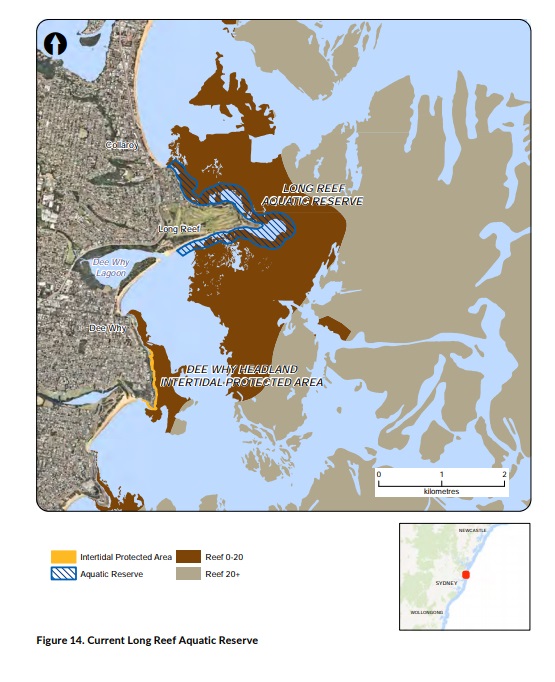
SITE OBJECTIVES
The primary objectives for the proposed Long Reef site are to:
• promote marine ecotourism in the bioregion
• enhance bequest values for current and future generations
• provide enhanced recreational experiences for particular user groups
• enhance opportunities for scientific research, education and learning including Aboriginal culture
• ensure appropriate mechanisms exist for community involvement in the management of the marine estate
• promote stewardship of the marine estate.
The secondary objectives that apply to this site are listed in Table 5.
ENVIRONMENTAL, SOCIAL, CULTURAL AND ECONOMIC VALUES
The site consists of a rock platform that projects from the coastline and provides rocky shore and shallow reef habitat with a full range of wave exposure and aspect. The reef platforms and reef complex extending across the shelf are together one of the best examples
of a wide range of interconnected ree
f habitats in the bioregion. The reefs include caves and overhangs and deep gutters.
Long Reef is dominated by extensive intertidal, shallow and deep rocky reefs that extend as continuous habitats several kilometres offshore. The Long Reef rocky shore is uncommon in that it extends in all compass directions and incorporates a wide range of exposed and sheltered habitats: it is one of the most extensive intertidal rock platforms in NSW. A range of threatened and protected
species utilise habitats at this site and adjacent areas, including black rockcod (Epinephelus daemelii), weedy seadragon (Phyllopteryx taeniolatus), greynurse shark, and many species of seabirds and local and migratory wader birds.
Long Reef Headland is popular with many user groups for recreation (walking, swimming, kayaking, paddle boarding) and boating. It is recognised as one of the most iconic fishing locations in the region.
Commercial fishers regularly fish in the waters offshore from Long Reef.
The Long Reef rock platform is a focal point for marine education and stewardship programs, with school excursions and community groups regularly visiting the reserve to learn about marine life.
PRIORITY THREATS TARGETED TO ENHANCE BENEFITS AT THIS SITE
The threats that will be addressed at this site and expected benefits to be enhanced are listed in Table 25.
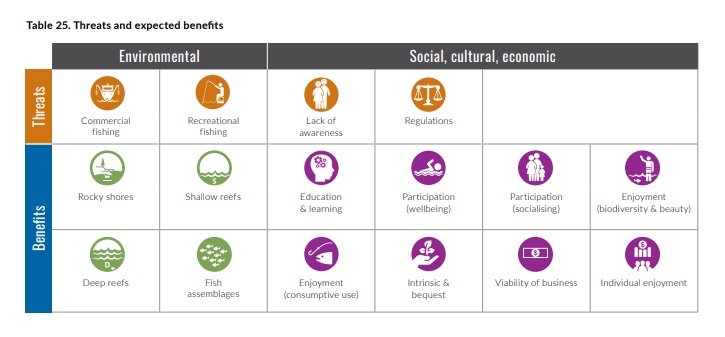
PROPOSED MANAGEMENT RULES
A 514 hectare special purpose zone is proposed at Long Reef. This would incorporate the current aquatic reserve and extend the current rules of the reserve, which permit line or spearfishing for finfish (fish with a backbone) only, and prohibit the collection of all marine invertebrates and plants whether dead or alive except for Aboriginal cultural use.
Other management methods that address the threats caused by recreational fishing are to be trialled at this site in consultation with recreational fishers.
Examples include catch-and-release fishing, gear-based restrictions, and specific bag and size limits. More information about the trial is described below.
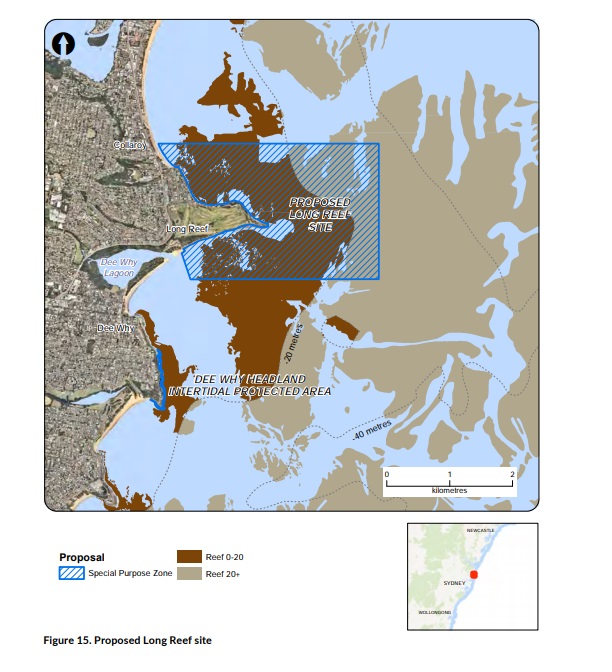
FEEDBACK FROM COMMUNITY ENGAGEMENT
Long Reef was identified in Phase 1 and 2 community engagement. It was described as a site with high environmental values, in particular by peak conservation stakeholders – the National Parks Association of NSW and Nature Conservation Council of NSW. A
local, community-based campaign resulted in many submissions in support of a no-take area at Long Reef. Many submissions also raised concerns about a potential no-take area at this site, describing it as one of the safer rock platforms to fish from in NSW. Long Reef is reported to provide easy access for elderly fishers and has the only open ocean boat ramp on the northern beaches of Sydney.
The Recreational Fishing Alliance, as well as a number of other submissions, listed Long Reef as a site of great importance for spearfishers, especially in adverse weather. Several submissions also raised concerns about possible negative impacts on kayak based fishing at Long Reef.
ALTERNATIVE APPROACHES TO ADDRESSING THREATS FROM RECREATIONAL FISHING – LONG REEF TRIAL SITE
Peak stakeholders from the recreational fishing sectors have recommended to the NSW Government that alternative approaches be considered to address priority threats caused by recreational fishing as part of any proposal to expand marine protected areas in the Hawkesbury bioregion. These include:
- catch-and-release fishing – where any fish caught are released alive and fish are caught in accordance with recommended catch-and-release fishing gear and fish handling guidelines promoted by Department of Primary Industries Fisheries
- reviewing recreational fishing bag and size limits in the bioregion to allow some take of fish and other recreationally caught species
- promoting the use of low-impact fishing gear (such as lures, trolling, circle hooks) to target pelagic fish, rather than bottom-set gear to target demersal fish that are associated with particular habitat sites (such as rocky reefs) and may be subject to higher rates of fishing pressure in high-use fishing areas
- seasonal restrictions to reduce impacts on certain species when they are known to be more readily accessible in an area of the bioregion.
Long Reef on Sydney’s northern beaches has been chosen as a site to trial these alternative approaches. The trial will involve additional engagement with recreational fishers to determine the methods to be trialled and ways to monitor their effectiveness over time as part of the Marine Integrated Monitoring Program (MIM Program). Subject to the research outcomes, consideration will be given to expanding the measures to other sites.
CABBAGE TREE BAY
The proposed Cabbage Tree Bay site is south of Manly Beach. It is dominated by rocky shores and subtidal reefs. Shelly Beach, at the eastern end of Cabbage Tree Bay, is a key feature of the area.
The proposed site extends the current Cabbage Tree Bay Aquatic Reserve (Figure 16) to Blue Fish Point. The protected area would include a 52 hectare sanctuary zone that extends the current reserve from Shelly Beach Headland to 250 metres north-west of Blue Fish Point (Figure 17) and a seven hectare special purpose zone at Blue Fish Point.
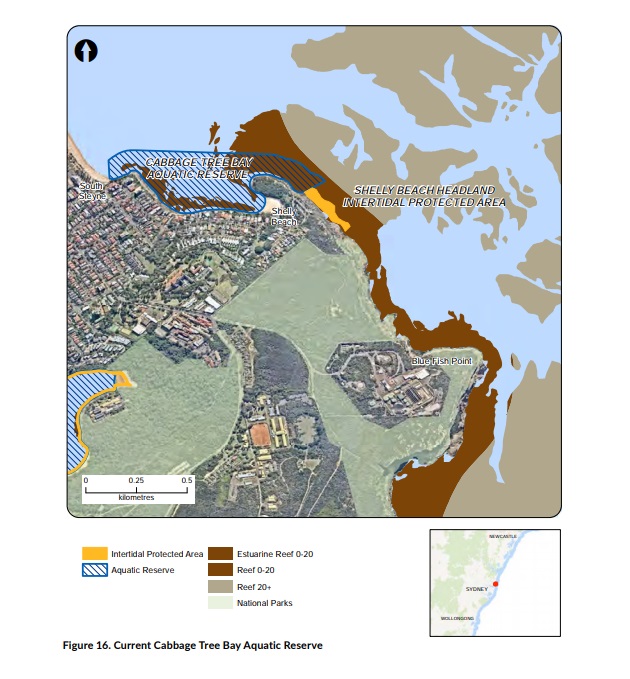
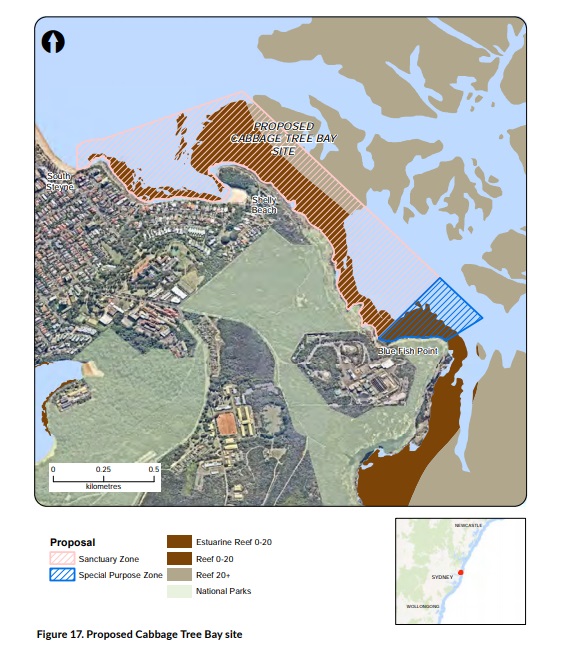
CURRENT MANAGEMENT
Cabbage Tree Bay Aquatic Reserve was established in 2002. It covers 18 hectares and extends from the southern end of Manly Beach at South Steyne to the northern end of Shelly Beach, encompassing all of Cabbage Tree Bay (Figure 16). Collecting, destroying or
interfering with all forms of marine life, whether dead or alive, is prohibited. Shelly Beach Headland Intertidal Protected Area (IPA) adjoins the aquatic reserve and protects a small intertidal area by way of a regulation under the Fisheries Management Act 1994.
SITE OBJECTIVES
The primary objectives for the proposed Cabbage Tree Bay site are to:
• enhance the conservation of marine biodiversity
• reduce risks to identified habitats of the bioregion
• promote marine ecotourism in the bioregion
• enhance the intrinsic benefits derived by the community from the marine estate
• enhance bequest values for current and future generations
• reduce conflicts between users of the marine estate
• provide enhanced recreational experiences for particular user groups
• enhance opportunities for scientific research, education and learning
• provide baseline monitoring areas (scientific reference sites)
• promote stewardship of the marine estate.
The secondary objectives that apply to this site are listed in Table 5.
ENVIRONMENTAL, SOCIAL, CULTURAL AND ECONOMIC VALUES
Cabbage Tree Bay is a very popular area for a wide variety of user groups, including scuba divers, swimmers, snorkellers and surfers. The existing aquatic reserve removed some previous sources of conflict – such as conflict between spearfishers and swimmers.
There is Zostera and Halophila spp. seagrass in the bay, primarily along the southern side, although this is currently unmapped.
Anchoring in this area is currently not permitted, although this is not well publicised, and vessels may be unaware they are anchoring in a seagrass area. Boating activity in the bay is significant during peak-use times, and user conflict between vessels and swimmers is not uncommon despite the small boating closure around Shelly Beach. The Bay provides safe haven for boats during strong southerly weather.
Cabbage Tree Bay is a west-facing embayment that provides protection from dominant south-easterly swells. This results in areas of sheltered beach and areas for seagrass to grow, which is uncommon on the NSW coast. There are areas of both intertidal and shallow
rocky reef that vary in exposure, with those on the eastern side of the headland most exposed. A number of threatened and protected species are known to frequent the area, including blue groper, green turtles, black rockcod and weedy seadragon.
Cabbage Tree Bay is part of the traditional lands of the Guringai (or Ku-ring-gai) people, and it is part of the Manly-Freshwater National Surfing Reserve. It is an area that has been regularly used for scientific research on rocky reef habitats.
Blue Fish Point is popular for recreational shore and boat-based fishing and for scuba diving. The location is considered hazardous in some swell conditions, and rock fishing fatalities have been reported here.
Some Ocean Trap and Line commercial fishing takes place in the area.
PROPOSED MANAGEMENT RULES
The proposal to extend the current reserve to 250 metres north-west of Blue Fish Point would prohibit all extractive activities in this zone except for Aboriginal cultural use (Table 28). This zone would also replace the existing Shelly Beach Headland IPA, which would increase protection of marine life and reduce the complexity of regulations.
Anchoring in seagrass habitat in Cabbage Tree Bay would also be restricted. Seagrass generally occurs at depths of eight metres or shallower, so anchoring inside much of Cabbage Tree Bay itself would be prohibited.
Courtesy moorings (including environmentally friendly moorings) or a designated anchoring area could be considered to manage boating access and use.
The proposed seven hectare special purpose zone at Blue Fish Point would prohibit hand gathering of marine invertebrates, except for lobster and abalone.
FEEDBACK FROM COMMUNITY ENGAGEMENT
The high environmental value of Cabbage Tree Bay was identified by peak conservation stakeholders – the National Parks Association of NSW and the Nature Conservation Council of NSW. The value of the existing Cabbage Tree Bay Aquatic Reserve was described
several submissions, including from Manly Council, as was a proposal to extend the current boundaries of the reserve, typically to Blue Fish Point. This reserve was often cited as a model for marine management in the bioregion that should be replicated. Safety concerns
about potential conflict between boats and passive water users were also raised.
NORTH HARBOUR
North Harbour includes the part of Sydney Harbour north of a line from North Head to Grotto Point. It includes Manly Cove, Spring Cove and all bays and beaches in this area.
The proposed site extends the current North Harbour Aquatic Reserve (Figure 18) to include all of North Harbour (Figure 19). Three new zones would be created: a 325 hectare special purpose zone, and two sanctuary zones with a combined area of 51 hectares, one at Fairlight and the other at Spring Cove.
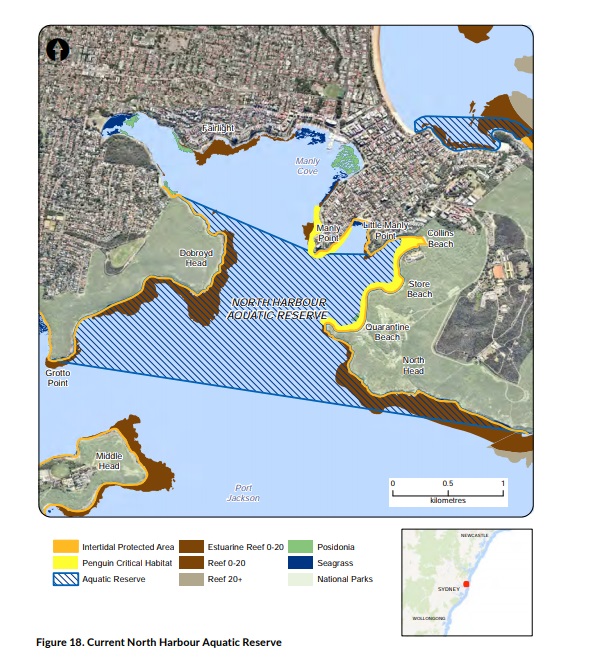
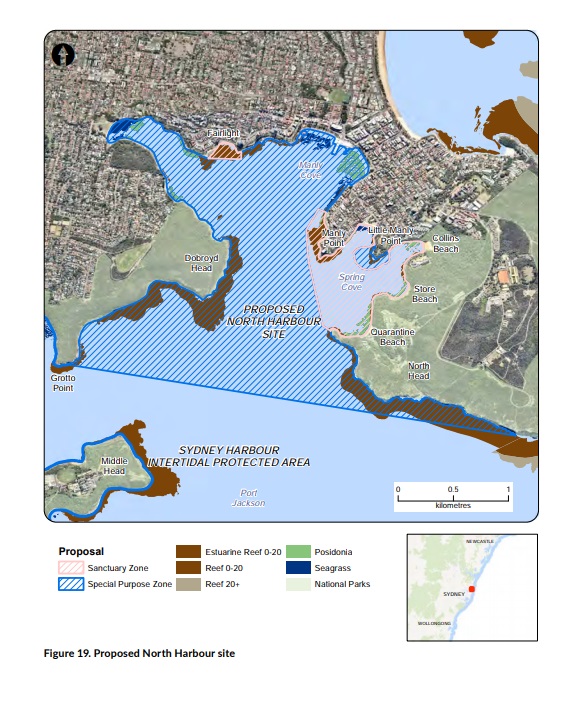
CURRENT MANAGEMENT
The 257 hectare North Harbour Aquatic Reserve (Figure 18) was established in 1982 and spans the area between North Head and Dobroyd Head. All marine species other than finfish are protected in the reserve, which allows line fishing for finfish only. All other fishing and collection methods are prohibited.
All of Sydney Harbour is closed to commercial fishing. Recreational fishing for shellfish is prohibited throughout Sydney Harbour. Netting, trapping, and spearfishing is prohibited in North Harbour. Sydney Harbour IPA also covers the coastline in North Harbour but not Manly Cove.
Little Penguin critical habitat restrictions include restrictions on fishing, anchoring, mooring and boating around Cannae Point and in Spring Cove. Courtesy moorings, including environmentally friendly designs, have been installed at Quarantine Bay and Manly Cove
West to reduce anchor damage to seagrass.
SITE OBJECTIVES
The primary objectives for the proposed North Harbour site are to:
• enhance the conservation of marine biodiversity
• reduce risks to identified threatened and protected species of the bioregion
• reduce risks to identified habitats of the bioregion
• promote marine ecotourism in the bioregion
• continue to provide for marine economic opportunities that are consistent with ecologically sustainable development, for example low-risk commercial fishing activities
• establish and maintain public infrastructure to support access and use of the bioregion, for example moorings, boat ramps
• enhance the intrinsic benefits derived by the community from the marine estate
• enhance bequest values for current and future generations
• reduce conflicts between users of the marine estate
• provide enhanced recreational experiences for particular user groups
• provide baseline monitoring areas (scientific reference sites) ensure appropriate mechanisms exist for community involvement in the management of the marine estate
• promote stewardship of the marine estate.
The secondary objectives that apply to this site are listed in Table 5.
ENVIRONMENTAL, SOCIAL, CULTURAL AND ECONOMIC VALUES
North Harbour includes a wide variety of habitats such as rocky shores, shallow rocky reefs, shallow soft sediments, beaches and seagrass beds. Most of the western shoreline and smaller areas of the eastern shoreline are rocky shore and subtidal reef. Threatened
and protected species are resident or are regularly observed in the area and include an endangered population of the seagrass Posidonia australis and little penguin. Dolphins and seals visit the area occasionally.
North Harbour area was used extensively by Aboriginal communities, known locally as the Gayemal clan of the Guringai tribe, who spent much of their time on the foreshores of Sydney Harbour. Spiritual sites and evidence of past cultural use, including art and
middens, have been recorded in the Aboriginal Heritage Information Management System. Important shipwrecks are also located in North Harbour.
The site is a focal point for boating (yachting, kayaking, power boats) and public and private on-water transport to Manly and other places. Scuba diving, snorkelling, swimming and on-water recreation are popular activities.
PRIORITY THREATS TARGETED TO ENHANCE BENEFITS AT THIS SITE
The threats that will be addressed at this site and expected benefits to be enhanced are listed in Table 29.
PROPOSED MANAGEMENT RULES
Recreational fishing and boating would be permitted in the special purpose zone, although existing restrictions on spearfishing and lobster fishing would continue (Table 30). Line fishing would no longer be restricted to finfish and would now include species such as squid. Other forms of hand gathering, including abalone fishing and collecting marine vegetation, would be prohibited. All forms of commercial fishing would be prohibited in this zone. Aboriginal cultural use and other low-risk activities such as scuba diving and snorkelling would be permitted in this zone.
In the proposed Fairlight and Spring Cove sanctuary zones, the removal or harm of marine biodiversity and habitats would be prohibited, including fishing by any method, hand gathering and collecting marine vegetation except for Aboriginal cultural use (Table 30). Anchoring would be prohibited in seagrass areas to prevent damage to the endangered Posidonia australis seagrass, and courtesy moorings would remain in place. Little penguin critical habitat areas would be included in the Spring Cove Sanctuary Zone.
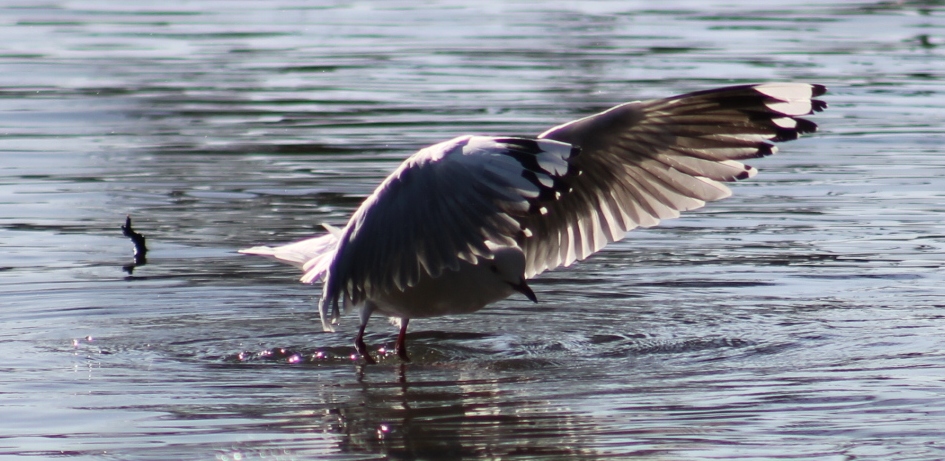
FEEDBACK FROM COMMUNITY ENGAGEMENT
The high environmental value of North Head and North Harbour was identified by peak conservation stakeholders – the National Parks Association of NSW and Nature Conservation Council of NSW. Submissions proposed no-take areas at North Head, Spring Cove, and
Old Man’s Hat.
The Recreational Fishing Alliance reported that North Harbour is a safe and easy to access recreational fishing spot for the young, elderly and disabled.
Comments supported a no-take area in Sydney Harbour (including for a Sydney Marine Park). Other submissions (including from the Recreational Fishing Alliance and the Australian National Sportfishing Association) proposed that Sydney Harbour be declared a recreational fishing haven.
CHOWDER BAY
Chowder Bay is on the north shore of Sydney Harbour, near Mosman.
A 14 hectare site is proposed for Chowder Head and part of Chowder Bay (Figure 20).
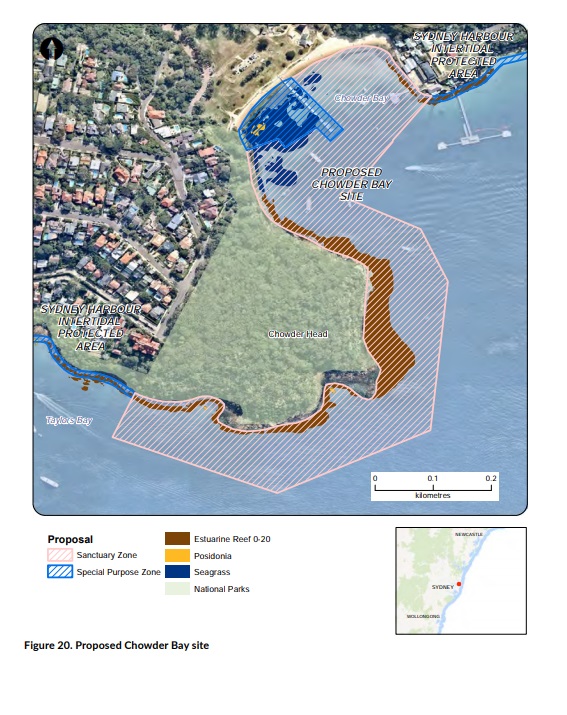
CURRENT MANAGEMENT
The shoreline of the proposed area is part of the Sydney Harbour IPA, which protects all marine invertebrates and cunjevoi.
Chowder Bay is currently closed to spearfishing as part of a closure under the Fisheries Management Act 1994.
SITE OBJECTIVES
The primary objectives for the proposed Chowder Bay site are to:
• enhance the conservation of marine biodiversity
• enhance the intrinsic benefits derived by the community from the marine estate
• enhance bequest values for current and future generations
• provide baseline monitoring areas (scientific reference sites).
The secondary objectives that apply to this site are listed in Table 5.
ENVIRONMENTAL, SOCIAL, CULTURAL AND ECONOMIC VALUES
Chowder Bay has shallow reefs and is used for marine education. It is next to the Sydney Institute of Marine Science. The area is used for passive recreation such as swimming, kayaking, snorkelling and scuba diving as the water is generally clear and has some protection from westerly winds. The proposed reserve excludes the popular and easily accessible fishing wharf.
The area has significance to the local Aboriginal communities. Spiritual sites and evidence of past cultural use, including art, have been recorded in the Aboriginal Heritage Information Management System.
PRIORITY THREATS TARGETED TO ENHANCE BENEFITS AT THIS SITE
The threats that will be addressed at this site and expected benefits to be enhanced are listed in Table 31.
PROPOSED MANAGEMENT RULES
A 13 hectare sanctuary zone is proposed for Chowder Head and part of Chowder Bay. In this zone, the removal or harm of marine biodiversity would be prohibited, including fishing by any method, anchoring in seagrass areas, harm to marine animals or plants, or collecting marine organisms whether dead or alive (Table 32).
Permissible activities would include those that are minimal–low risk, such as swimming, snorkelling, scuba diving and Aboriginal cultural use.
A 1 hectare special purpose zone is proposed for the area surrounding the jetty and swimming enclosure. In this zone, recreational line fishing would be permitted but spearfishing and hand gathering would be prohibited, in line with current management rules.
FEEDBACK FROM COMMUNITY ENGAGEMENT
The high environmental value of Chowder Bay was recognised by peak conservation stakeholders – the National Parks Association of NSW and Nature Conservation Council of NSW. The Sydney Institute of Marine Science states that this site is likely to be suitable for a baseline scientific monitoring site.
Comments supported a no-take area in Sydney Harbour (including for a Sydney Marine Park). Other submissions (including from the Recreational Fishing Alliance) proposed that Sydney Harbour be declared a recreational fishing haven.
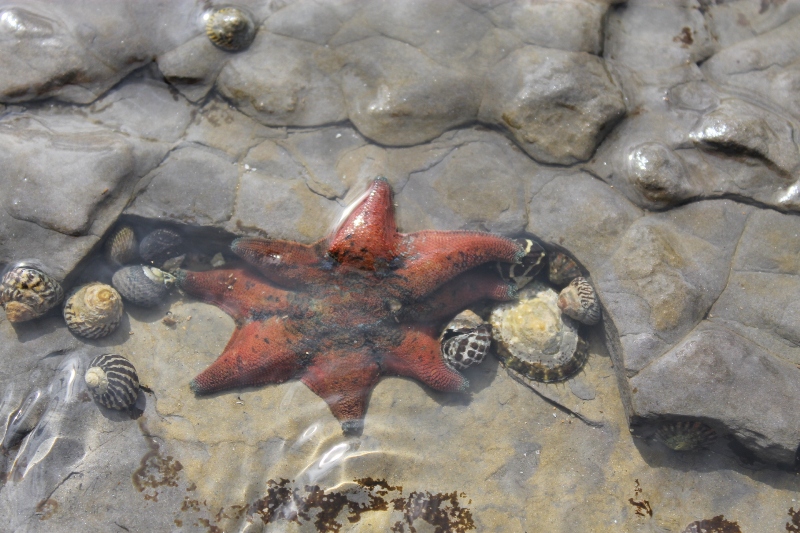
PROTECTING THE FUTURE OF MANLY’S MARINE ESTATE
Thursday, 16 August 2018
Residents, businesses and community groups on the Northern Beaches are encouraged to have their say on ways to protect our marine environment, with Manly included in a proposed new marine park off the Newcastle-Sydney-Wollongong coast.
Mr Griffin welcomed the opportunity for residents to have their say on the proposed marine park, which would include 25 sites from Newcastle to Wollongong aimed to enhance marine biodiversity, including at Cabbage Tree Bay and North Harbour.
“These two sites in Manly have been carefully analysed by the NSW Marine Estate Management Authority following extensive community consultation, and now we want to hear whether they meet the community’s expectation,” Mr Griffin said.
“On the Northern Beaches we are incredibly fortunate to have some iconic landscapes and marine environment, and I am committed to ensure this continues for years to come.
“This draft strategy will deliver an increase in the protected area at Cabbage Tree Bay as well as three new zones in North Harbour including at Fairlight Beach. Importantly, there is a good balance to the plan that will allow recreational fishing to still occur where it is most popular.”
“It is also intended to benefit local businesses by protecting promoting the beauty and importance of the marine biodiversity of Manly.”
Key points
Cabbage Tree Bay
• The proposed site extends the current Cabbage Tree Bay Aquatic Reserve to Blue Fish Point.
• The protected area would include a 52 hectare sanctuary zone (increased from 18 hectares) that extends the current reserve from Shelly Beach Headland to 250 metres north-west of Blue Fish Point and a seven hectare special purpose zone at Blue Fish Point.
• Anchoring in seagrass habitat in Cabbage Tree Bay would continue to be restricted.
• The proposed seven hectare special purpose zone at Blue Fish Point would prohibit hand gathering of marine invertebrates, except for lobster and abalone.
North Harbour
• The proposed site extends the current North Harbour Aquatic Reserve to include all of North Harbour.
• Three new zones would be created: a 325 hectare special purpose zone, and two sanctuary zones with a combined area of 51 hectares, one at Fairlight and the other at Spring Cove (between Quarantine Beach, North Head, to Manly Point and east to Collins Beach).
The NSW Government has today also unveiled details of $45.7 million of additional funding to deliver the first stage of a ten-year Marine Estate Management Strategy.
Mr Griffin said Manly and the Northern Beaches would benefit from this historic investment in the NSW marine estate.
“This strategy sets the platform for us to balance environmental conservation with economic growth so that our important eco-tourism industry can continue to thrive.
“The nine initiatives will address the major threats to our estuaries, beaches and coastal waters, especially from pollution and marine litter.
“The ten-year strategy also aims to deliver healthy coastal habitats and sustainable land use, plan for climate change, protect Aboriginal cultural values of the marine estate, reduce impacts on marine life, enhance social, cultural and economic benefits and deliver effective governance.
“The message from all of these stakeholders was loud and clear: the marine estate is very valuable to our community so we need action now to maintain its value into the future.”
Anyone can have their say on the proposed marine park by completing the online submission form available at https://www.marine.nsw.gov.au/key-initiatives/hawkesbury-shelf-marine-assessment
Sydney’s Marine Life One Step Closer To Having The Protection It Deserves
August 16, 2018: Nature Conservation Council NSW
Conservation groups have welcomed the NSW Government’s plan to create a marine park to protect the coast, beaches, headlands and marine life of the Sydney region.
“Today’s announcement opens the way to giving Sydney’s iconic blue backyard the protection it deserves,” Australian Marine Conservation Society CEO Darren Kindleysides said.
“This is a really good opportunity for our marine life and everyone who loves fishing, boating, diving and swimming.
“Sydney is home to one of the planet’s greatest coastlines, with stunning marine life to match.
"Unfortunately, protection for this part of the coast has been far from world-class. This announcement is a signal that this is about to change.”
Nature Conservation Council CEO Kate Smolski said: "The NSW Government deserves credit for listening to the scientific evidence and the overwhelming public support for a marine park for the Sydney region.
“We now need people to make the most of this opportunity by having a say during the consultation period to ensure we get the best possible protection the Sydney’s beaches, bays and headlands, and our beloved marine life and coastal lifestyle.”
Sydney Marine Park Campaigner Sharnie Connell said: “The science shows sanctuary zones in marine parks work because they increase the diversity, size, and abundance of marine life.
“Science-based sanctuary protection for the Sydney region will also secure a healthy blue backyard for our boating, swimming, surfing and fishing lifestyle.
“Our harbour, coastline and beaches are part of what makes the Sydney region so special but being on the doorstep of three major cities means that our seas are under pressure from coastal development, fishing, pollution, and climate change.
“It is vital we give our coastal waters a chance to recover so they can continue to support the astonishing variety of marine life we have on our doorstep – from weedy sea dragons to fairy penguins and whales.
“Over the coming weeks, we’ll be thoroughly reviewing the proposal to make sure all the important places receive the protection they deserve.
“We urge the government to now swiftly move to create the marine park as our marine life has already waited years for this important opportunity.
“Many members of parliament including Bruce Notley-Smith, James Griffin and Felicity Wilson have worked to champion today’s announcement.
“Today the Coalition joined the ALP and the Greens in their public support for a marine park for the Sydney region.”
ABOUT MARINE PARKS
NSW marine parks are multiple-use and allow a range of activities including recreational fishing, commercial fishing, boating, diving, snorkeling and swimming across the region. The activities allowed are determined by zoning arrangements developed through community consultation.
When the Marine Park for the Sydney region is fully established, NSW will have seven coastal and offshore marine parks. The others include Cape Byron, Solitary Islands, Port Stephens, Jervis Bay, Batemans and Lord Howe.
ABOUT THE CAMPAIGN
The Sydney Marine Park campaign is a joint project of the Australian Marine Conservation Society and the Nature Conservation Council of NSW.
